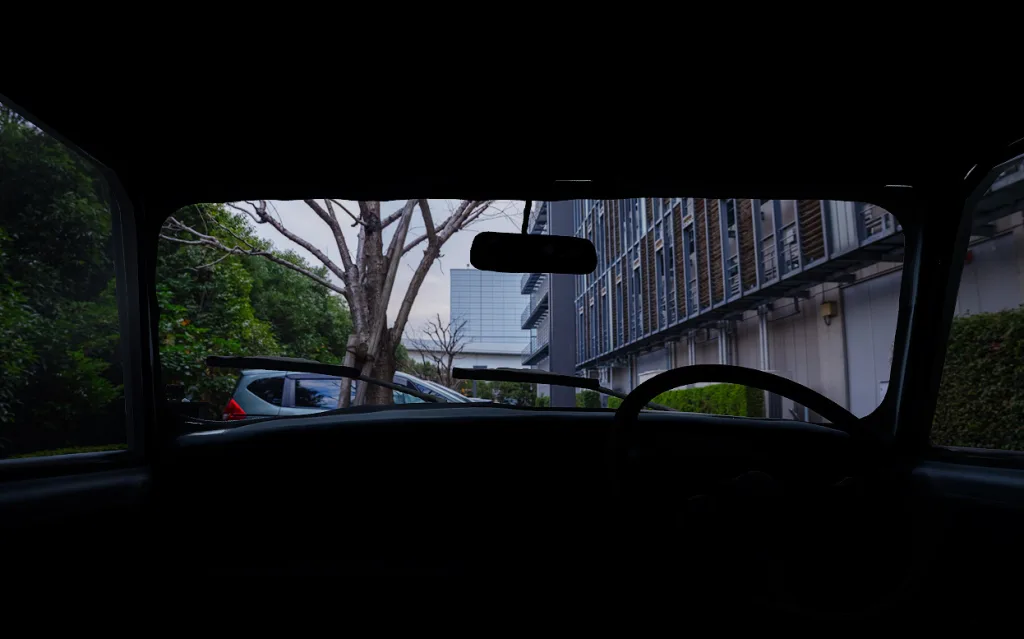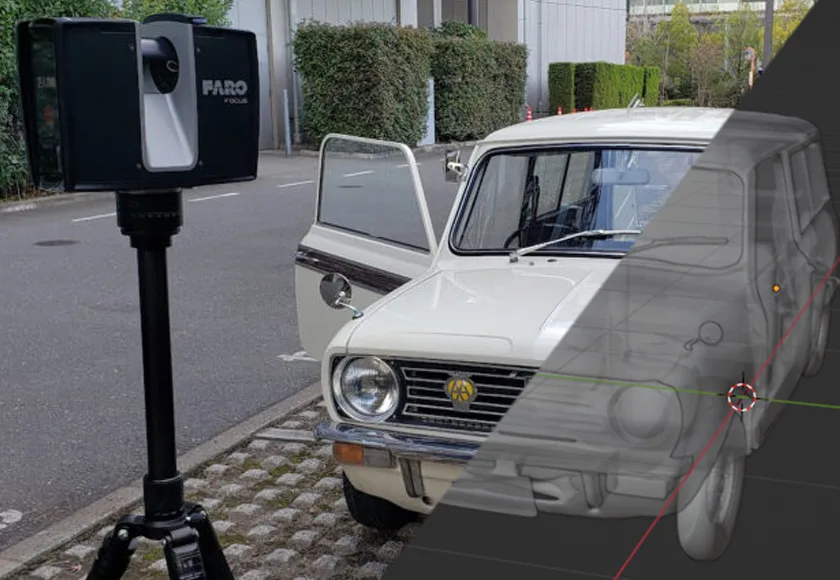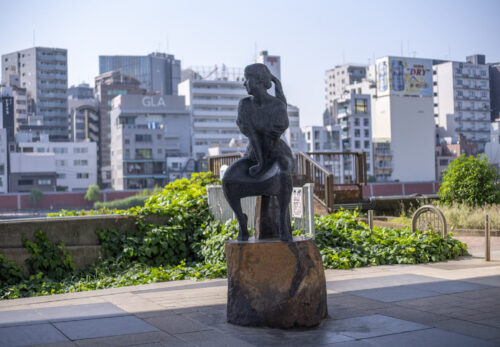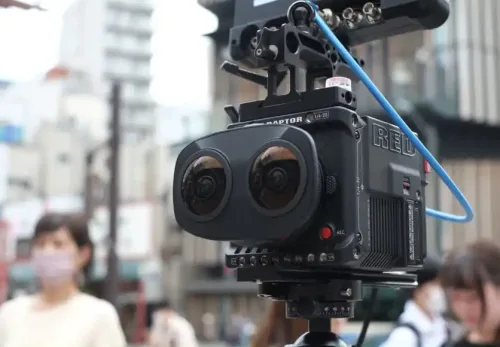At Jouer Corporation, we provide high-quality photogrammetry services using the FARO Focus Laser Scanner, capable of high-precision 3D scanning, and the GFX100, a hundred-megapixel medium format mirrorless digital camera. We also offer solutions that combine large drones and the RED V-RAPTOR 8K VV, an 8K120fps cinema camera. These services have various applications, including the film and entertainment industry, automotive sector, virtual reality (VR) and augmented reality (AR), advertising, education and training, and historical preservation. By digitizing historically significant vehicles into CG data, we enable diverse uses.
We cater to VFX/CG studios specializing in Visual Effects (VFX) and Computer Graphics (CG), post-production companies, and firms adept in digital video production by providing point cloud and mesh data from these laser scanners, as well as camera data materials for textures using photogrammetry. We also offer post-processing services as required. Our dedicated staff and a range of equipment are ready to respond swiftly to your inquiries. Please feel free to contact us.
Today, we take on the challenge of photogrammetry for a classic car with a white body. We tested how well it can be transformed into a 3D model. White vehicles are notoriously tricky for photogrammetry.
A Photogrammetrist’s Nightmare: The White-Bodied Car
Today, we will be conducting a photogrammetry test on a classic car with a white body, using the FARO Focus Laser Scanner in combination with a DSLR camera. In photogrammetry, shiny objects and those that are white or black pose challenges for 3D modeling. We aim to assess how effectively we can perform photogrammetry on this car, which is anticipated to be difficult to process.

We photographed the car with its doors open and closed to capture the interior as well. Due to limited time, we were able to take approximately 700 shots. Given more time, we would have liked to take a much larger number of photographs.
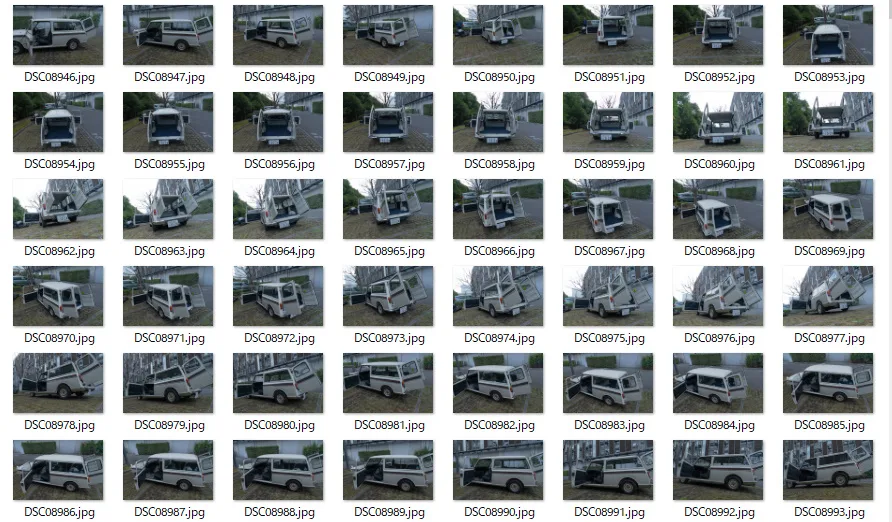
The FARO Focus Laser Scanner was used to scan eight points around the vehicle at 45° intervals, and two points inside the vehicle. The data is analyzed using FARO SCENE and then imported into Reality Capture. FARO SCENE is a software for processing data from the FARO Focus Laser Scanner, while Reality Capture is a photogrammetry software.
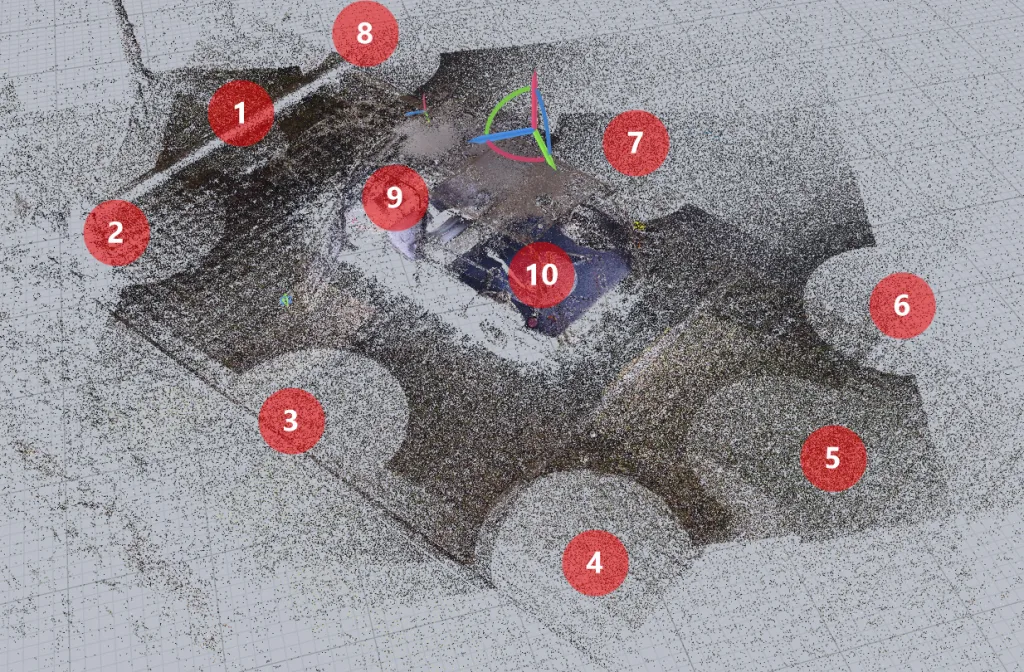
We integrated the point cloud data from the FARO Focus Laser Scanner with the data captured by the DSLR camera. Out of 738 data points, 722 were successfully integrated, indicating that most of the data was connected.

When checked from a top-down view, it becomes evident that the connectivity of the right side door area is weak. This suggests that there are either fewer photographs of this part, or some other issue has occurred. By bringing a workstation to the site and checking the connectivity quality, we can ensure a safe shooting process. It’s beneficial to have enough time for confirmation as the processing can be time-consuming.
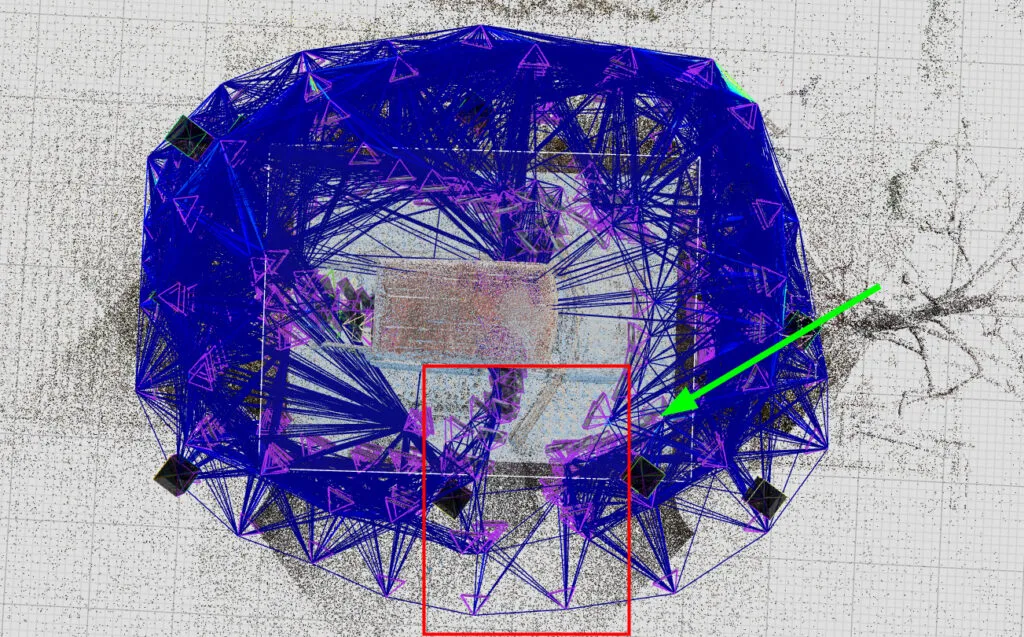
Photogrammetry is a technique that creates 3D models from photographs by identifying feature points in the images and calculating their positions and distances across different images to generate 3D data. In cases like white (or black) cars, it becomes difficult to find feature points on the white surfaces, resulting in irregularities and gaps in the model.

In the photogrammetry process, the flat surfaces actually ended up being uneven. There were also parts where large holes appeared.
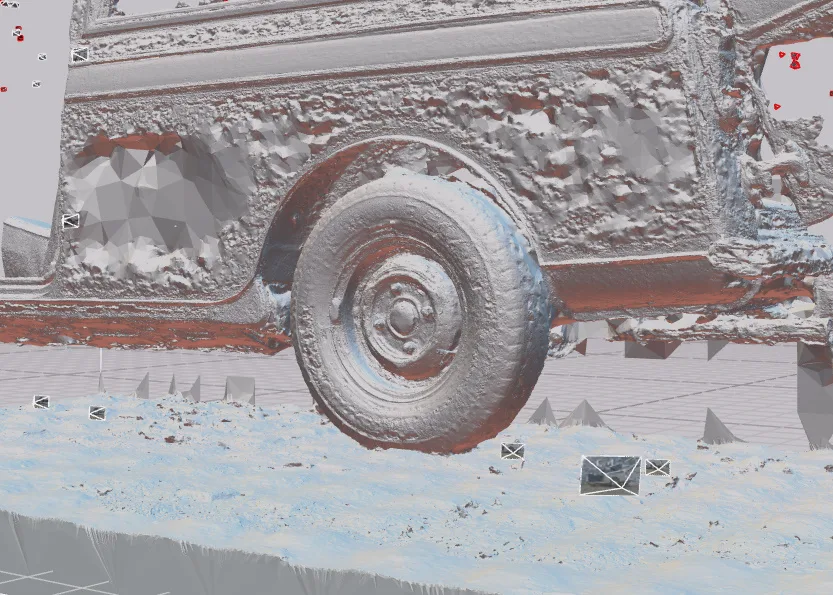
Laser scanners generate precise 3D coordinates of objects by measuring the light reflected off their surfaces using laser beams. They can scan white-bodied objects, which are typically challenging for photogrammetry. However, since laser scanners rely on reflection, they struggle with objects that reflect light poorly, such as black objects, or those that cause diffuse reflection. For example, the black parts of tires absorb the laser, making it difficult to capture their shape.

By combining the distinct characteristics of photogrammetry and laser scanning, we were able to capture the shapes of both white areas and tires. However, this simultaneous use also increases the noise from both the photographs and the laser scans. For instance, the noise increased on white surfaces compared to using only laser scanner data. It’s quite a challenging process.

We generate a mesh from the integrated data. The original data consists of a massive 357 million triangles. With this material, it should become easier to create CG content in post-production and digital video production. The use of a laser scanner also ensures accurate measurements.
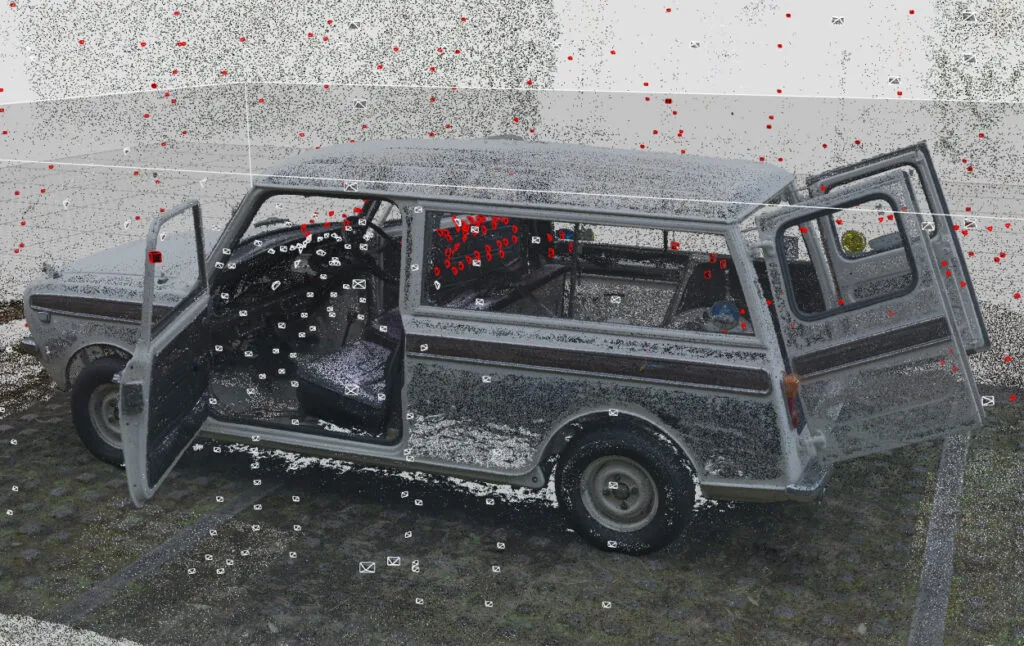
We resize the data to a lighter form while ensuring that the details do not degrade. The triangle count was reduced to about 7 million. By achieving this level of triangle reduction, it becomes possible to perform further processing with other Digital Content Creation (DCC) tools.

The specifics of the post-processing are left to the discretion of each specialist company. However, we have attempted to refine the CG material for use in applications and at the web level. With a clear direction in mind, we first broke down the mesh into parts and created the body. The mesh was lightened to 200K. At this size, the data should be suitable for use on smartphones and web applications.

There are two types of 3D model rendering methods: Lit and Unlit. Simply put, these are about the reflection of lighting. The difference between ‘Lit’ and ‘Unlit’ is based on how they handle lighting.
Lit models receive light from light sources in the scene, creating realistic shadows and reflections. Unlit models are unaffected by environmental light or light sources, maintaining a constant color and brightness. Lit is suitable for situations where realism is emphasized, while Unlit is appropriate for stylized visuals or environments with limited resources. Let’s take a look at the actual differences between Lit and Unlit.
The meshes obtained through photogrammetry are generally uneven when magnified. The same applies to laser scanners.”
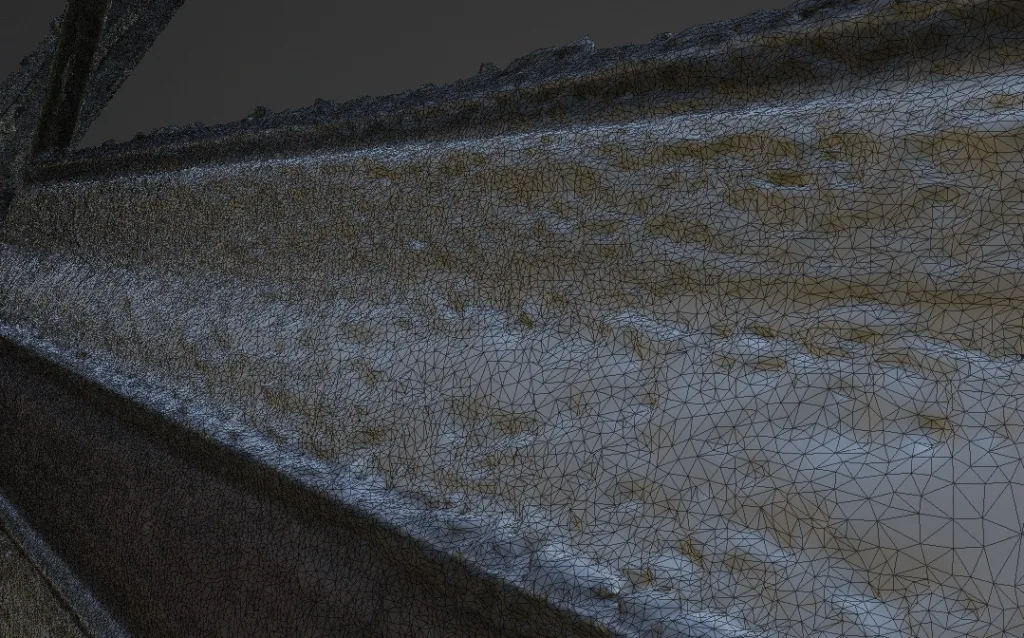
When lighting is applied in this state, shadows form on the uneven surfaces, resulting in a bumpy and unpleasant appearance.
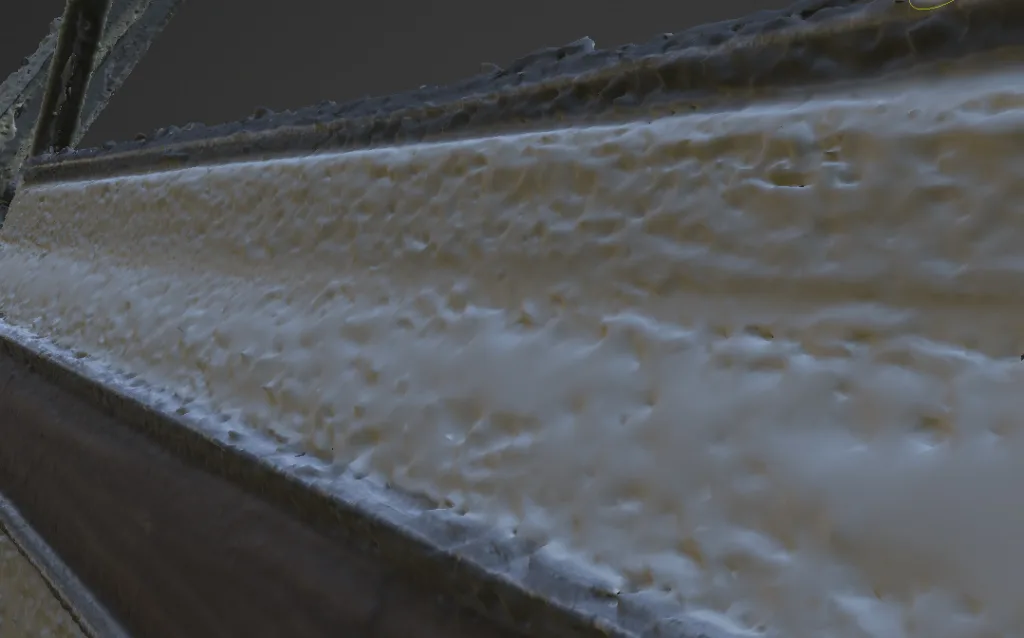
Switching to Unlit removes the lighting effects, thereby eliminating the bumpy appearance. When displayed in Unlit mode, photogrammetry models can look reasonably good without processing the mesh surfaces. However, achieving a realistic representation with lighting becomes difficult.
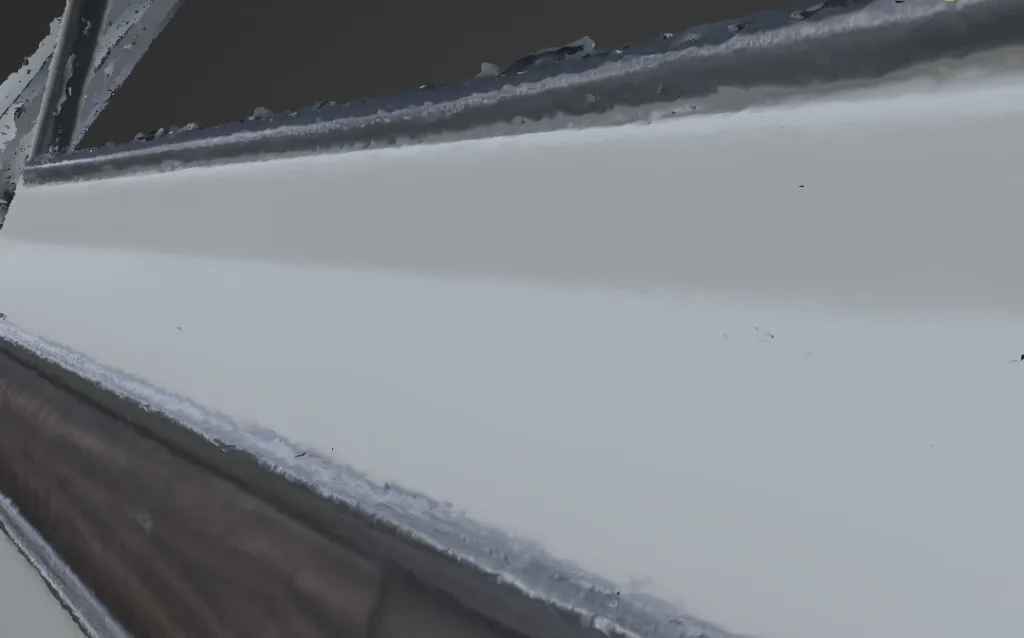
Therefore, we smooth out the mesh surfaces. Let’s try applying lighting in this state.

Previously, the shadows created an uneven bumpy appearance, but by smoothing out the mesh, the irregularities are removed, resulting in a smoother surface without shadow formation. Such processing makes it possible to achieve a better representation in Lit mode.
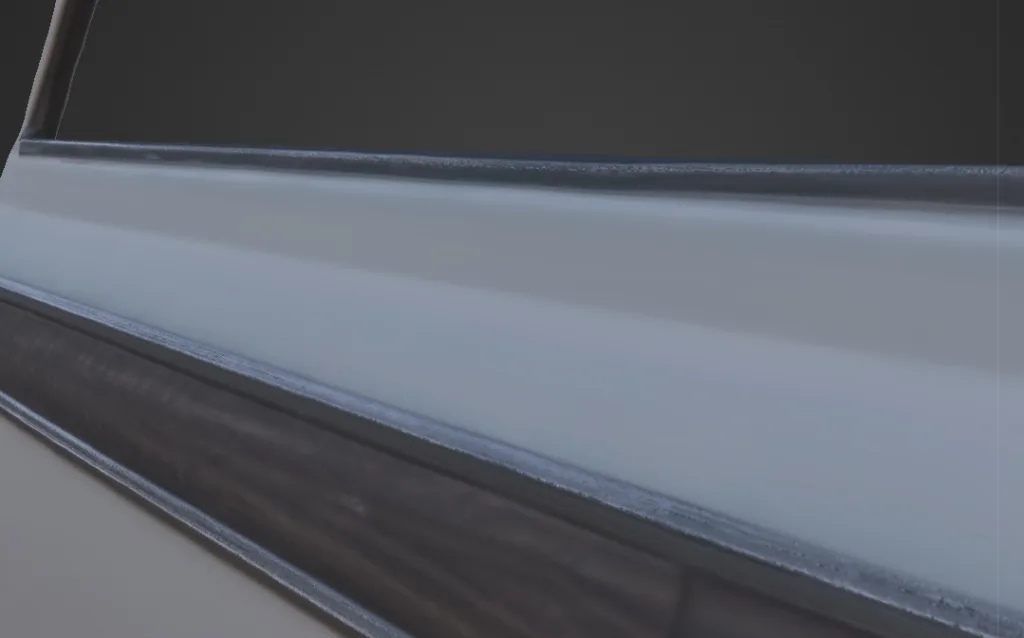
In addition to processing the mesh, we will also work on processing the textures .
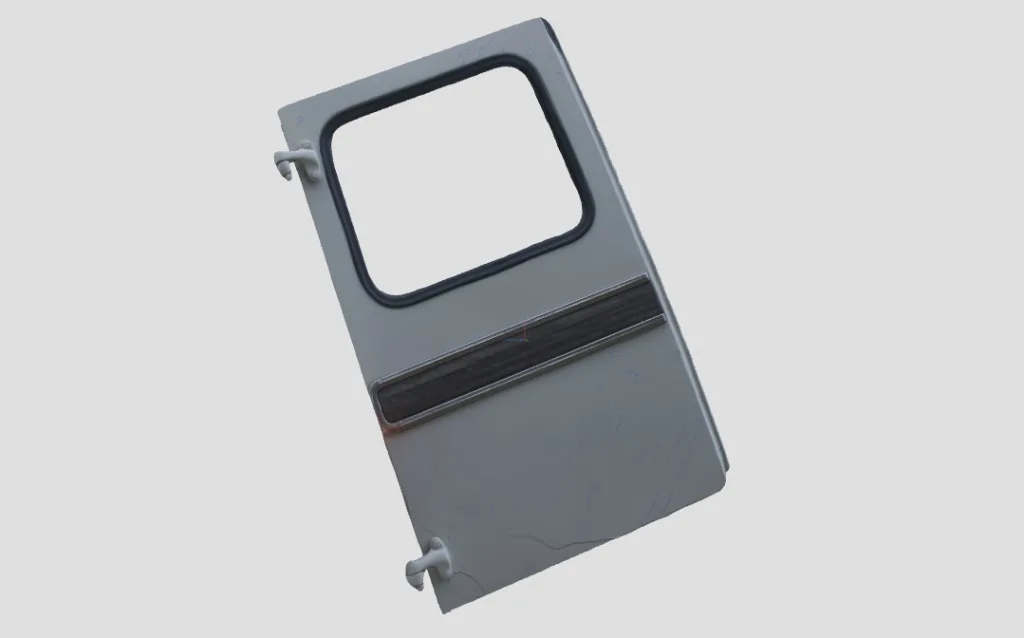


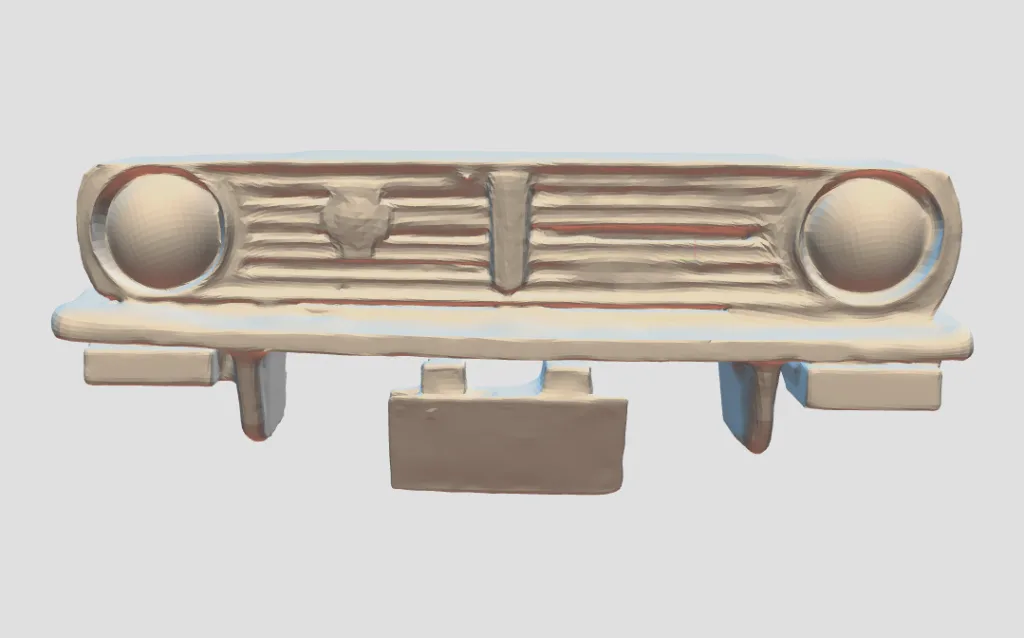

Assemble and adjust the dismantled parts. For detailed metal parts such as wipers and mirrors, it is advisable to model them separately.

Next, the data is transferred to Unreal Engine 5. Unreal Engine 5 is used not only for game development, but also for the creation of films, TV shows, animation, architectural visualisation and many other interactive experiences.

We used a stylish cityscape as a backdrop. The next step is to set up the lighting and camera settings.

Adding lighting creates an atmosphere. Mesh processing is important to create this atmosphere.

Rendering settings are made and the video is exported in HDR. The data will now be available for grading and use according to the scene you want to use.

With the addition of the laser scanner, we found that even white classic cars can be used as 3D models. To get close to the smallest details and to show the interior panels, for example, you need to create fine details by modelling. A basic model of low to medium complexity could be used as is.
Compositing the background of the shooting location in HDRI.
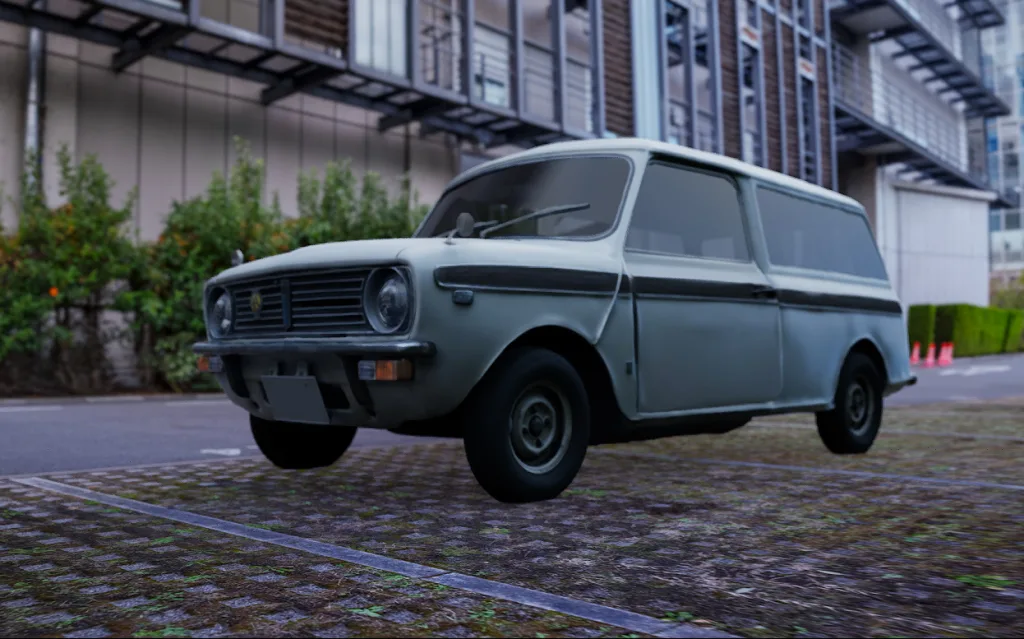
The brightness of the external environment and the images from inside the car to outside the car could be simulated realistically. Good, good, good.
